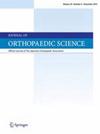富血小板血浆治疗延迟愈合和未愈合骨折:总括荟萃分析。
IF 1.4
4区 医学
Q3 ORTHOPEDICS
引用次数: 0
摘要
背景:长骨骨折可能会出现不愈合/延迟愈合的情况,而导致这种破坏性情况的确切机制仍不清楚。最近,一系列荟萃分析研究了局部应用富血小板血浆(PRP)对骨折不愈合/延迟愈合患者的影响;然而,现有荟萃分析的结论仍存在争议。本项总括荟萃分析旨在综合并重新计算现有证据,以评估 PRP 对未愈合/延迟愈合骨折影响的确定性:方法:通过在PubMed、Web of Knowledge和Scopus上进行系统搜索,获得了截至2023年11月调查PRP疗法对未愈合/延迟愈合骨折影响的相关荟萃分析和单项研究。采用随机效应模型对愈合率和愈合时间重新进行了元分析。纳入的荟萃分析的方法学质量和证据质量分别采用 AMSTAR2 和 GRADE 标准进行评估:结果:共纳入了 5 项荟萃分析和 13 项单项研究,包括 1362 名患者。分析结果显示,非愈合/延迟愈合骨折的愈合率(相对风险(RR)= 1.30,95%CI:1.06 至 1.60)和愈合时间(平均差(MD):-1.25,95%CI:-2.09 至 -0.42)均有明显改善。然而,将各项研究汇总后发现,PRP 并不能有效提高愈合率,却能有效缩短愈合时间(MD = -2.15,95 % CI = -3.17至-1.13)。PRP疗法对疼痛改善和治疗后肢体功能优/良没有明显影响。不良副作用的风险不显著:这项总括荟萃分析显示,PRP 可缩短骨折未愈合/延迟愈合患者的愈合时间,且无潜在副作用。这一发现还需进一步研究证实。本文章由计算机程序翻译,如有差异,请以英文原文为准。
Platelet-rich plasma in the treatment of delayed union and nonunion fractures: An umbrella meta-analysis
Background
Long bone fractures may exhibit nonunion/delayed union and the precise mechanism underlying this devastating condition remain unknown. More recently, a series of meta-analyses have examined the effect of local administration of platelet-rich plasma (PRP) in patients suffering from nonunion/delayed union fractures; however, the conclusions of available meta-analyses have remained debatable. This umbrella meta-analysis was performed to synthesize and recalculate available evidence to assess the certainty of the effect of PRP on nonunion/delayed union fractures.
Methods
Relevant meta-analyses and individual studies investigating the effect of PRP therapy on nonunion/delayed union fractures were obtained through a systematic search in PubMed, Web of Knowledge, and Scopus up to November 2023. Meta-analyses were re-conducted for healing rate and healing time using a random effects model. The methodology quality of the included meta-analyses and the quality of evidence was assessed using the AMSTAR2 and GRADE criteria, respectively.
Results
A total of 5 meta-analyses with 13 individual studies, comprising 1362 patients, were included. The analysis revealed a significant improvement in both healing rate (relative risk (RR) = 1.30, 95%CI: 1.06 to 1.60) and healing time (mean difference (MD): −1.25, 95 % CI: −2.09 to −0.42) of nonunion/delayed union fractures. However, when individual studies were pooled, PRP was not effective in increasing the healing rate, while it was effective in reducing healing time (MD = −2.15, 95 % CI = −3.17 to −1.13). PRP therapy had no significant effect on pain improvement and the Excellent/Good Posttreatment Limb Function. The risk of the adverse side effects was not significant.
Conclusion
This umbrella meta-analysis revealed that PRP may reduce healing time in patients with nonunion/delayed union fractures, with no potential side effects. This finding is needed to be confirmed by further studies.
求助全文
通过发布文献求助,成功后即可免费获取论文全文。
去求助
来源期刊

Journal of Orthopaedic Science
医学-整形外科
CiteScore
3.00
自引率
0.00%
发文量
290
审稿时长
90 days
期刊介绍:
The Journal of Orthopaedic Science is the official peer-reviewed journal of the Japanese Orthopaedic Association. The journal publishes the latest researches and topical debates in all fields of clinical and experimental orthopaedics, including musculoskeletal medicine, sports medicine, locomotive syndrome, trauma, paediatrics, oncology and biomaterials, as well as basic researches.
 求助内容:
求助内容: 应助结果提醒方式:
应助结果提醒方式:


